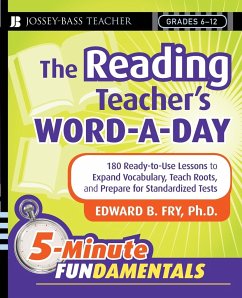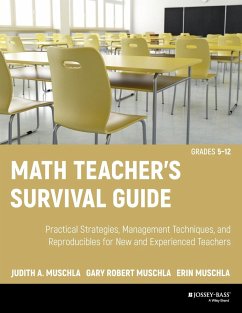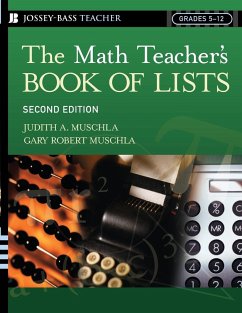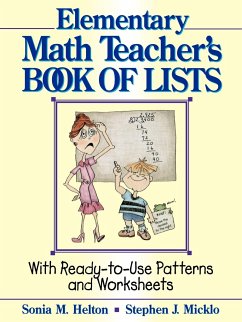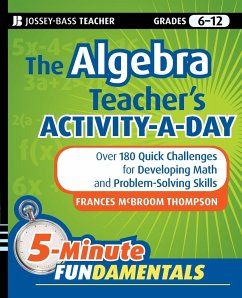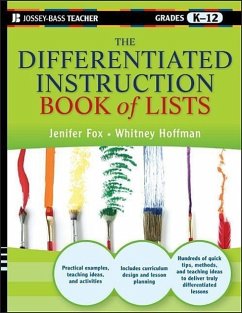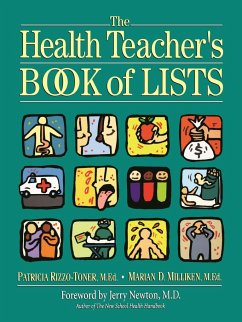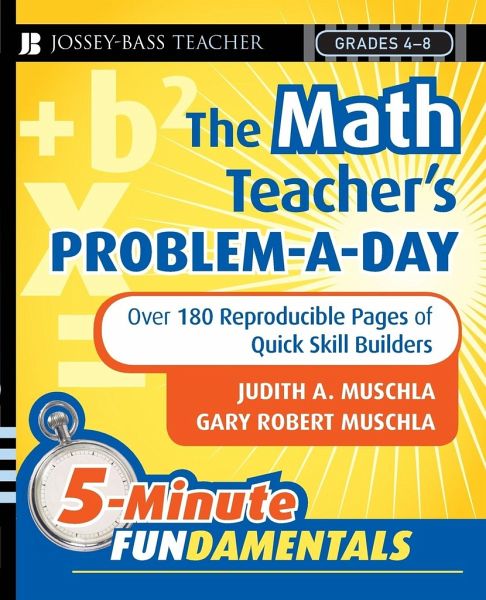
The Math Teacher's Problem-A-Day Grades 4-8
Over 180 Reproducible Pages of Quick Skill Builders
Versandkostenfrei!
Versandfertig in über 4 Wochen
17,99 €
inkl. MwSt.

PAYBACK Punkte
9 °P sammeln!
The Math Teacher'sProblem-a-Day, Grades 4-8 Over 180 Reproducible Pagesof Quick Skill Builders From bestselling authors Judith and Gary Muschla, The Math Teacher's Problem-a-Day is a hands-on resource containing 180 handy worksheets, one for each day of the school year, to help students in grades 4-8 acquire the skills needed to master mathematics. These reproducible worksheets are perfect for "sponge activities"--five-minute challenges to start or end a class period--that can also be used as supplemental lessons, homework, or extra credit. With problems based on the Standards and Focal Points...
The Math Teacher'sProblem-a-Day, Grades 4-8 Over 180 Reproducible Pagesof Quick Skill Builders From bestselling authors Judith and Gary Muschla, The Math Teacher's Problem-a-Day is a hands-on resource containing 180 handy worksheets, one for each day of the school year, to help students in grades 4-8 acquire the skills needed to master mathematics. These reproducible worksheets are perfect for "sponge activities"--five-minute challenges to start or end a class period--that can also be used as supplemental lessons, homework, or extra credit. With problems based on the Standards and Focal Points of the National Council of Teachers of Mathematics, the book is designed to give students valuable practice in math skills, using specific activities to enhance critical thinking?and boost test scores. The topics covered focus on the core math concepts and skills required for middle school students, including: * Numbers and Operations * Algebra * Geometry * Measurement * Data Analysis Part of the 5-Minute Fundamentals series, The Math Teacher's Problem-a-Day is an important resource that will help today's students understand more concepts, make connections between branches of mathematics, and apply math skills to a variety of real-life problems. Praise for The Math Teacher's Problem-a-Day "Mathematics teachers everywhere in grades 4 through 8 will find these worksheets not only uniquely beneficial but perfectly aligned with NCTM standards. In an age where No Child Left Behind holds teachers accountable for instruction, it is refreshing to have a resource that ensures successful student practice of key mathematical focal points." --Elizabeth Lell, department chairperson of curriculum and instruction, Hammarskjold Middle School, East Brunswick Public Schools, New Jersey





